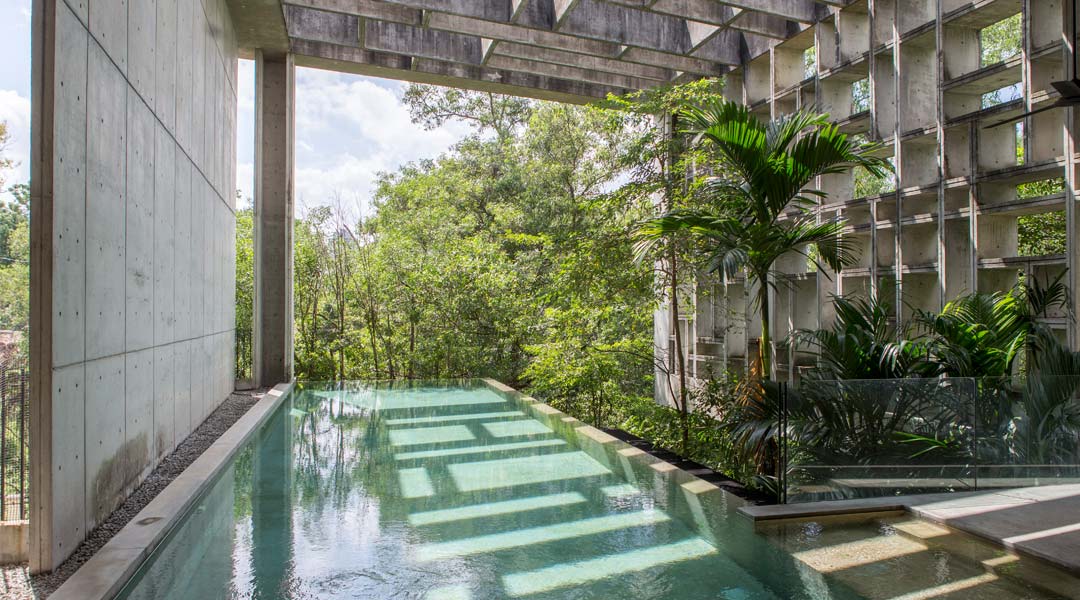
WHBC Architects builds a big, broad brise soleil that safeguards a home
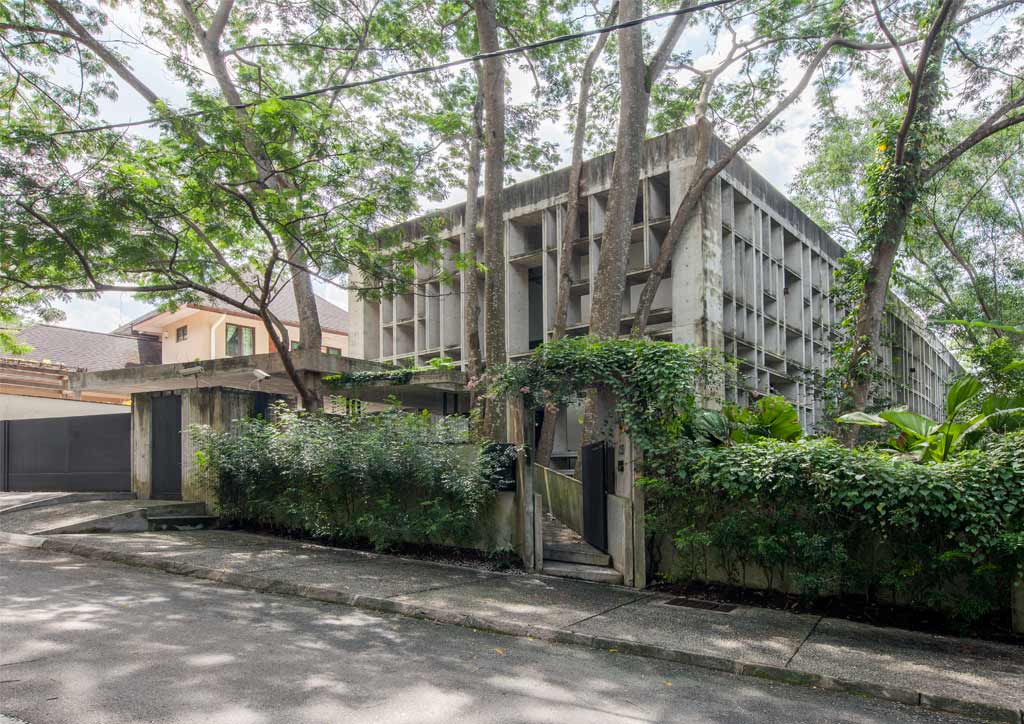
Sheltered among trees, it looks like a forgotten temple with its worn and mossy concrete surfaces and labyrinthine elevations. The client gave WHBC Architects two mandates: First, retain the existing trees within the 975-square meter lot and replicate the experience of living in a jungle. Second, make it as low-maintenance as possible—no periodic cleaning and painting of the house and no constant mowing and weeding of the property. “The most expensive commodity is time,” the owner reasoned.
Because the firm takes particular pride in employing topographical context to inform their designs, they eagerly accepted the challenge. “We wanted a house that embraces the dense, natural enclave surrounding it,” says BC Ang, who runs WHBC with his wife, Wen Hsia.

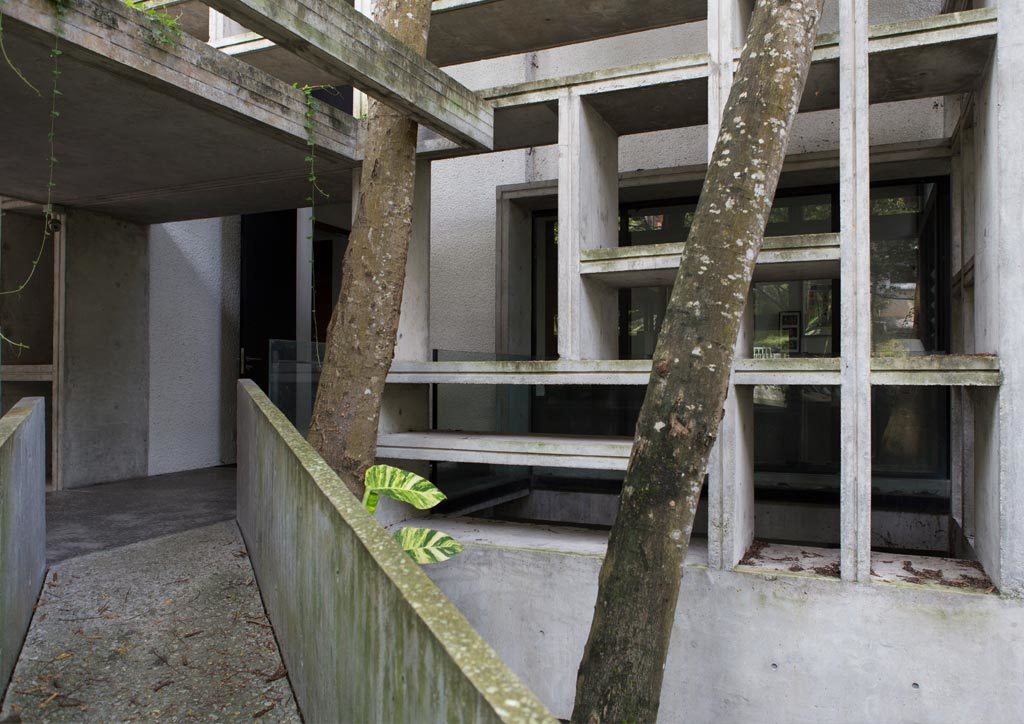
Rather than give the architects headaches, the mature albizia trees on the property made all the difference in their design concept. Instead of the 10-foot setback required by the village, they set the house 12 feet back to give the surrounding albizia more room to flourish. Trees are nature’s brise soleil, a home’s first line of defense against the extremes of tropical climate. Apart from deflecting direct sunlight, they would dramatically cut down the heat gain of concrete—an ineffective insulator, and would absorb run off from rain and keep the land stable with minimal artificial aid.
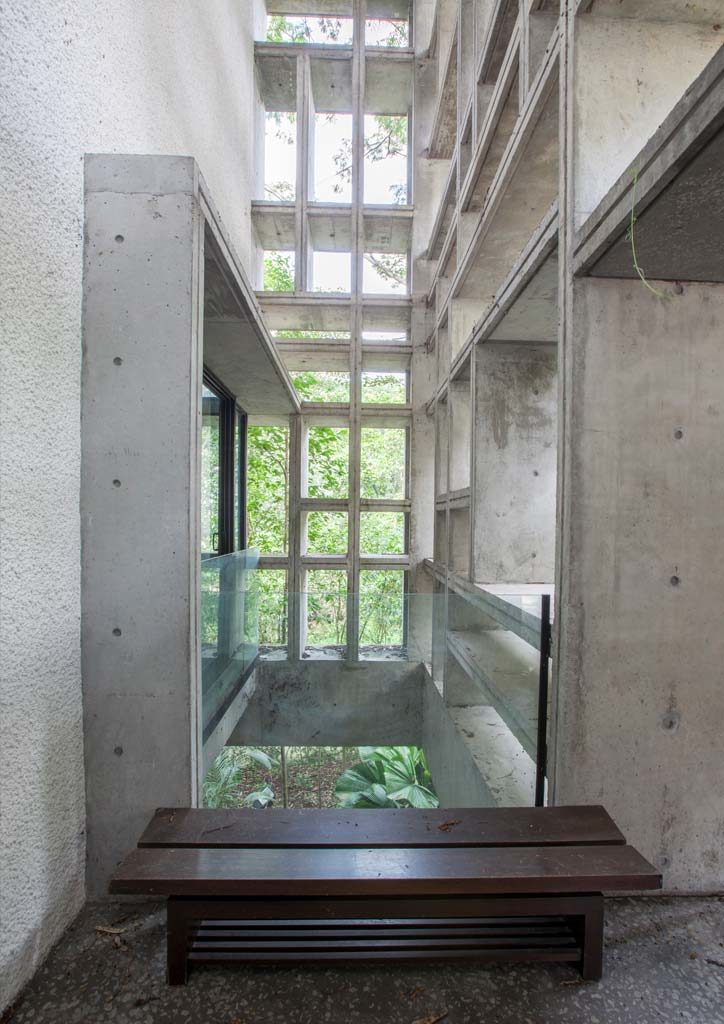
The three-storey house was built on the remaining 696 square meters, elevated from the sloping terrain, with the garage and service areas below. The house faces northeast, where the trees are fewest. A concrete brise soleil in a grid pattern was built on the front façade and wraps around the northwest side. The concrete grid projects from the structural walls by a meter, forming square and rectangular cavities ranging from 2 by 2 to 8 by 4 feet. “There’s no special reason for the pattern,” says Ang. “They’re just based on the standard plywood sizes used for the formwork, and we just worked along the sides.” Apart from screening the house from sunlight and effectively keeping rain out, the brise soleil acts as a protective shell against the surrounding overgrowth, especially on the northwest side where the trees are thickest.
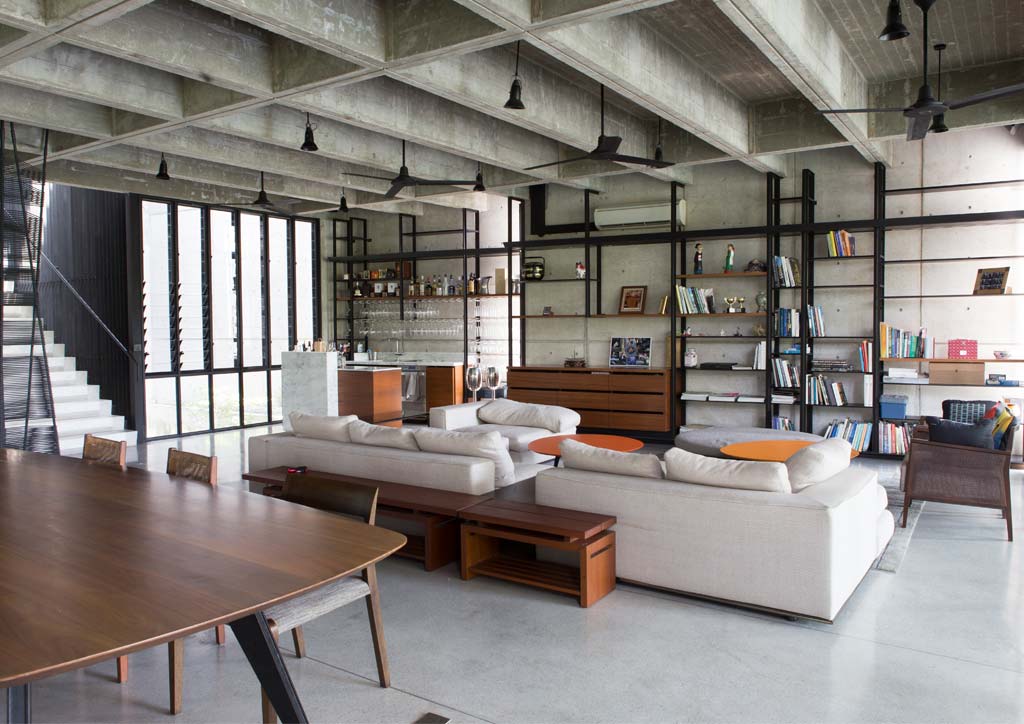
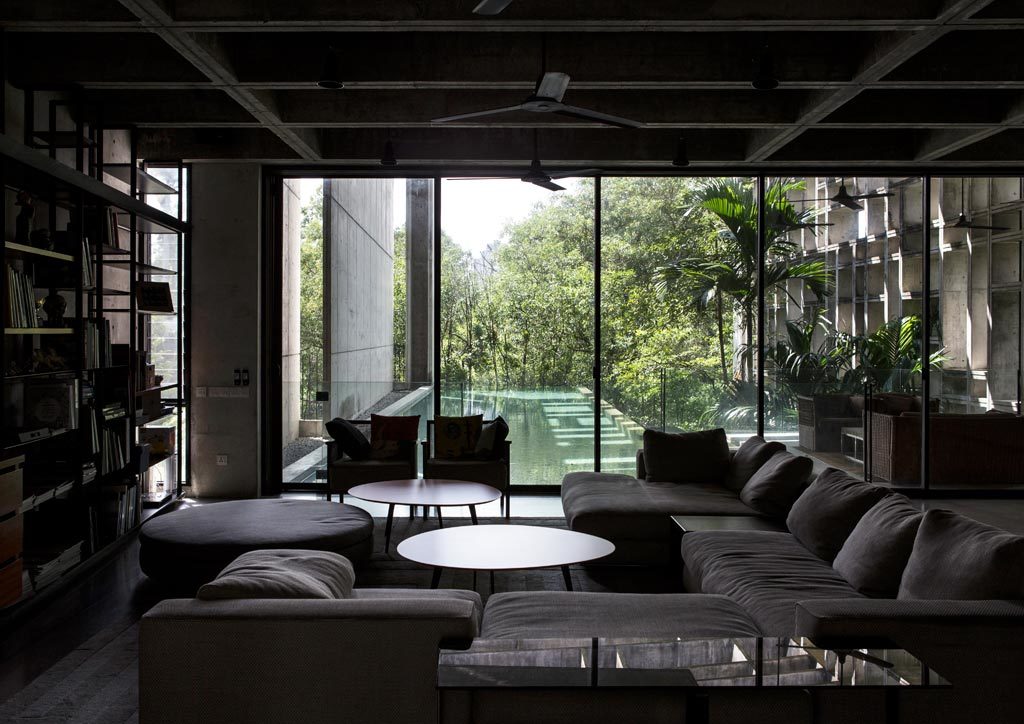
The southeast side, meanwhile, is walled up due to its proximity to a neighboring house. Light and air still filter into the interior through this side, however, as the elevation is made up of three large concrete walls angled like louvers with 150-millimeter gaps—in effect, another brise soleil, but on a larger scale. A bridge flanked by albizia trees leads to the front door. An ante-room to the right of the main door holds visitors upon entry, and straight ahead is a narrow corridor flanked by the staircase. The corridor leads to a brightly lit space that brings the living, dining, and kitchen areas together. “I wanted connections within these spaces, so interaction with people is easy,” says the owner, who often invites friends and relatives over.
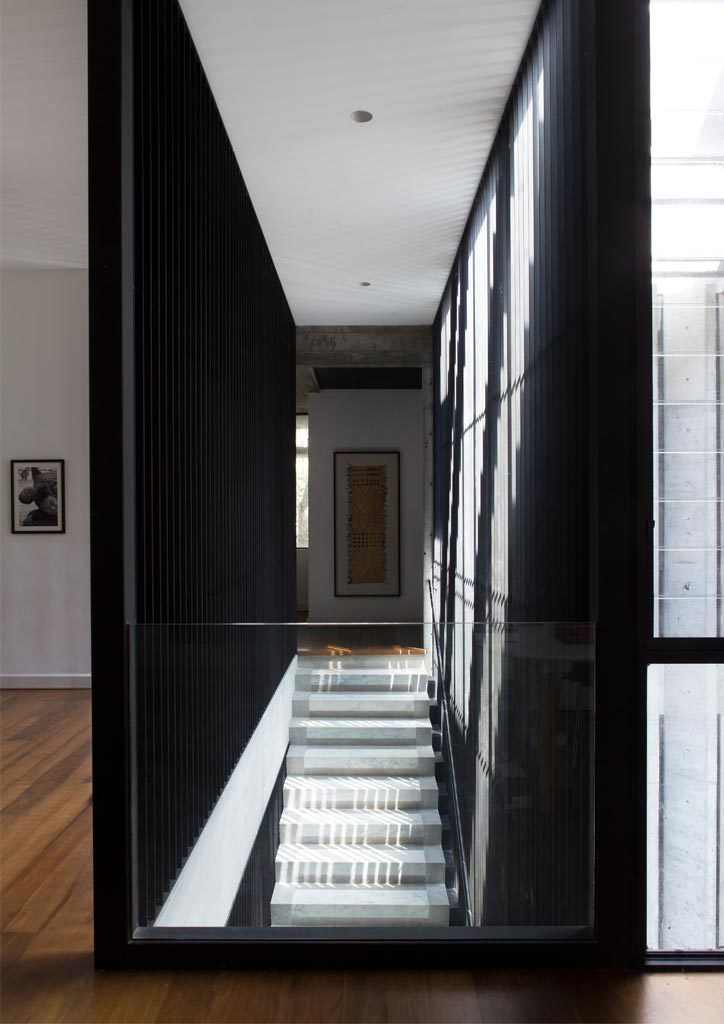
Beyond the large living space is a double-volume courtyard that takes up almost half the building footprint, with a lap pool and deck. The southwest side is completely open, while the same concrete grid as the façade’s screens the northwest side and overhead, like a trellis. The quality of the space out here is extraordinary, but not for everyone. The empty concrete niches stained and streaked by nature give off the feeling of isolation and abandonment. But the owner welcomes the solitude. “In the morning, I have my coffee or morning juice out here,” says the owner. “I’ll hear birds chirping in the trees. Even monkeys hang around the brise soleil sometimes.”

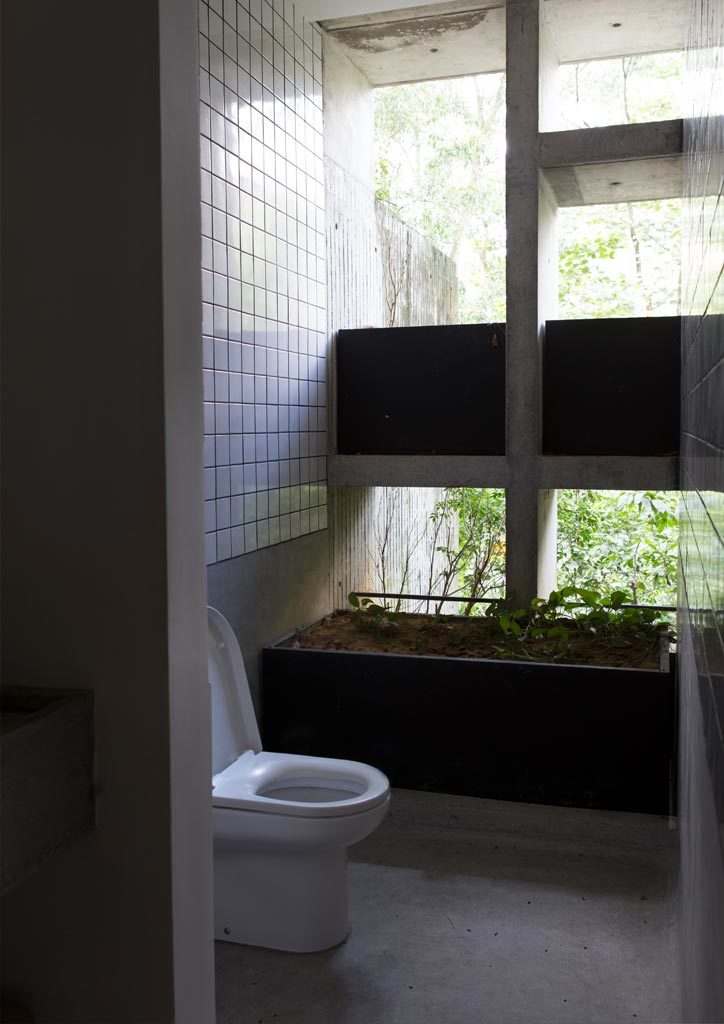
The powder room adjacent to the ante-room shows how the brise soleil protrudes from the structural wall. With no glass or screens separating the inside from the outside, many of the residents’ indoor activities feel like they’re en plain air.
This outdoor area serves as the home’s main source of cool air, which is instantly available as one opens the sliding doors of the living area. The entry of cool air pushes hot air up and out the light well by the staircase, which is wrapped on three sides by jalousie widows. The exit of hot air in turn hastens the entry of cool air wafting in from the pool area. Cool air in this house is a renewable resource.

The bedrooms on the second level enjoy ample light and air as well. Positioned on the northwest side, the children’s bedrooms have large windows doubly screened by the brise soleil and tree canopies. The master bedroom overlooks the double-height courtyard, with jalousie windows allowing copious amounts of air to flow in and out. “Wind direction changes over the year, so if I say I oriented the house in a certain direction, I’d be lying,” says Ang. “The most important thing in a tropical house is ventilation, making sure there’s an inlet and outlet for air.” ![]()
READ MORE: The interplay of colors inside Philipp Mohr’s faithful renovation of a Le Corbusier apartment


